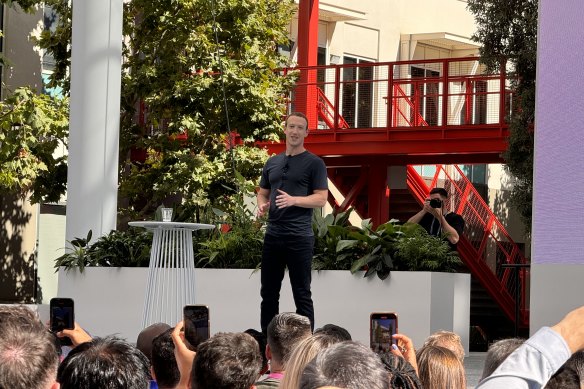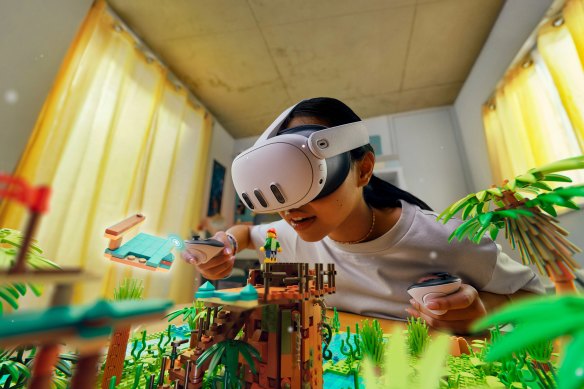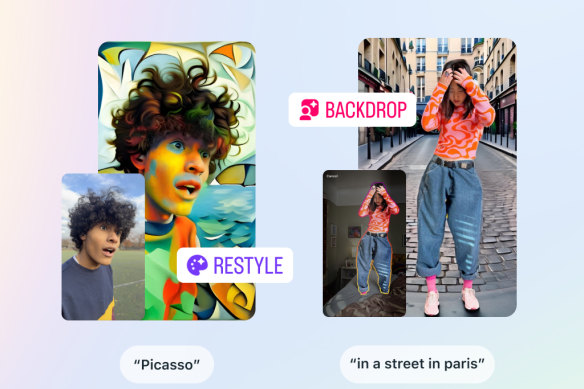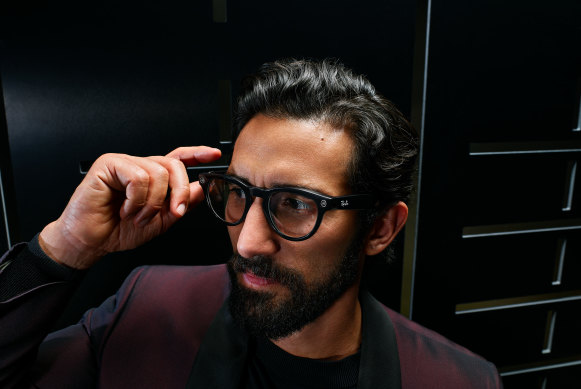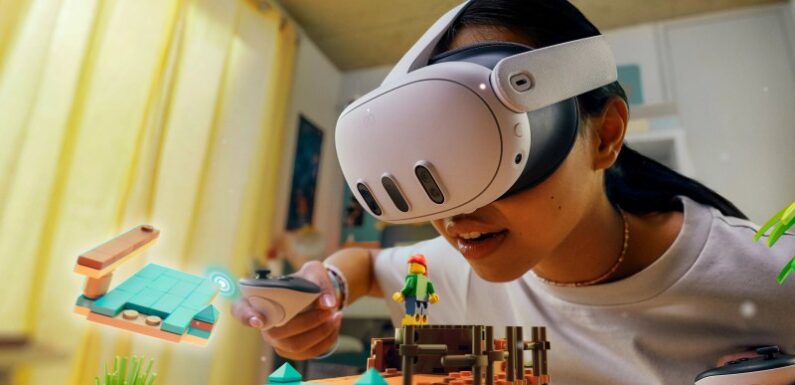
Save articles for later
Add articles to your saved list and come back to them any time.
San Francisco: Meta has unveiled the next phase in its plans to usher in the so-called metaverse, introducing a new consumer headset for augmented or virtual reality, new smart glasses, and a raft of generative AI chatbots at its annual Connect developer conference in Menlo Park, California.
In the two years since the Facebook parent changed its name, tech industry excitement has largely shifted from metaverse and blockchain to AI, and Meta’s messaging has shifted accordingly. But in an address to kick off Connect, chief executive Mark Zuckerberg made it clear the company still has its sights on the theoretical immersive future of the internet.
Chief executive Mark Zuckerberg explained how Meta’s new headset, glasses and AI bots would lead the way to the metaverse.Credit: Tim Biggs
“Soon the physical and digital will come together in what we call the metaverse,” he said.
“In the future you’re going to walk into a room and there are going to be as many holograms and digital things for you to interact with as there are physical objects.”
He went further by saying some of the people in your home could soon be digital, representing either a real human beaming in from afar or an AI construct ready to help you out.
The Meta Quest 3 is a new headset that begins to make it all possible, with high-resolution colour pass-through that means you can see the world around you clearly while you use the device. Meta said it is twice as powerful as the popular Quest 2, has a resolution with 10 times as many pixels, works with all existing Quest apps and will support brand new games that scanned your surroundings to incorporate the real world. It comes with upgraded controllers but can alternatively track your empty hands and fingers.
The Meta Quest 3 can overlay digital images on our regular view of the world.
In a future update, users will also be able to pin virtual assets around their home, which will appear in the same place every time they use their headset. Eventually, Zuckerberg said, physical media like books, games and art may be replaced by digital versions but still appear in real spaces through this kind of augmented reality.
Meta took several shots at Apple’s high-priced upcoming Vision Pro headset, by calling the Quest 3 “the world’s first mass-market mixed reality headset”, and (to borrow Apple’s phrasing) the “best value spatial computing” there will be for a long time. Launching in Australia at October 17 for $800 the Quest 3 represents a significant increase in price over the Quest 2, but remains far less expensive than Apple’s debut headset, which will launch in the US this year at $US3000 ($4683).
The company also finally unveiled a generative AI chatbot product to match OpenAI’s chatGPT and Google’s Bard, but it’s taking a more personal approach. Meta has created 28 AI agents with specialised personalities and specialities, including a cooking coach and a creative writer, which you can interact with on social media and chat apps as though they’re real people. Each one is portrayed in their profile pictures by an actor or celebrity, including Snoop Dogg and Matildas captain Sam Kerr.
New generative AI features are coming to Instagram.
It also has a less colourful agent called Meta AI, which can access real-time web information via Microsoft Bing, though it said this feature is for the US only. The chatbots are currently in beta, and Zuckerberg stressed that Meta will have ethical safeguards in place before full launch.
Eventually, Meta plans to allow creators and businesses to develop their own AI chatbots, with a product it calls AI studio, to interact with fans or provide chat support to customers.
The company also unveiled its text-to-image engine Emu, which it said can create images based on a few words of input within a few seconds. It’s rolling out a new feature using the technology across its chat apps, which lets users create new stickers on the fly by describing what they want. And new Instagram features coming soon will allow users to create filters or replace their photos background with text descriptions too.
Lastly, Meta showed off a new pair of glasses in partnership with Ray-Ban, which will have Meta AI built in. The smart glasses have a 12MP camera, an array of five microphones, a pair of speakers, 32GB of storage and come with a charging case that can keep them going for a total of 36 hours before needing to plug in.
When paired with your phone the glasses can play audio and make calls, while they can also take photos and videos. If users start a livestream from their phone, they can switch to their glasses view at any time so viewers can see what they’re seeing. Wearers can also talk to the Meta AI, for example asking to take a photo and message it to a friend without needing to use their phone.
The Ray-Ban and Meta Smart Glasses work with tinted or prescription lenses.
In a future update, Meta said the AI will have access to the camera and microphone feed so users can ask it about what they see and hear. This could include identifying landmarks, or reading signs written in an unfamiliar language.
The glasses have a large blinking light on the front to let other people know if the wearer is capturing pictures or video, and come in black or a selection of semi-transparent colours. They can be configured with coloured, prescription or transitions lenses and in Australia will start at $450 when they go on sale on October 17.
The author travelled to California as a guest of Meta.
Get news and reviews on technology, gadgets and gaming in our Technology newsletter every Friday. Sign up here.
Most Viewed in Technology
From our partners
Source: Read Full Article
